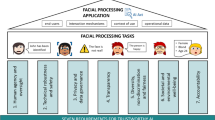Abstract.
Web services designed for human users are being abused by computer programs (bots). The bots steal thousands of free e-mail accounts in a minute, participate in online polls to skew results, and irritate people by joining online chat rooms. These real-world issues have recently generated a new research area called human interactive proofs (HIP), whose goal is to defend services from malicious attacks by differentiating bots from human users. In this paper, we make two major contributions to HIP. First, based on both theoretical and practical considerations, we propose a set of HIP design guidelines that ensure a HIP system to be secure and usable. Second, we propose a new HIP algorithm based on detecting human face and facial features. Human faces are the most familiar object to humans, rendering it possibly the best candidate for HIP. We conducted user studies and showed the ease of use of our system to human users. We designed attacks using the best existing face detectors and demonstrated the challenge they presented to bots.
Similar content being viewed by others
References
Ahn L, Blum M, Hopper NJ (2004) Telling humans and computers apart automatically. Commun ACM 47(2):56-60
Ahn L, Blum M, Hopper NJ, Langford J (2003) CAPTCHA: Using hard AI problems for security. In: Proceedings of Advances in Cryptology, Eurocrypt’03, Warsaw, Poland. Lecture notes in computer science, vol 2656. Springer, Berlin Heidelberg New York, pp 294-311
Baird HS, Popat K (2002) Human interactive proofs and document image analysis. In: Proceedings of Document Analysis Systems 2002, Princeton, NJ, August 2002, pp 507-518
Chew M, Baird HS (2003) BaffleText: a human interactive proof. In: Proceedings of the 10th IS&T/SPIE Document Recognition and Retrieval conference, Santa Clara, CA, 22 January 2003
Coates A, Baird H, Fateman R (2001) Pessimal print: a reverse Turing test. In: Proceedings of the IAPR 6th international conference on document analysis and recognition, Seattle, September 2001, pp 1154-1158
Colmenarez A, Huang TS (1997) Face detection with information-based maximum discrimination. In: Proceedings of IEEE CVPR, Puerto Rico, July 1997, pp 782-788
Gu L, Li SZ, Zhang H-J (2001) Learning probabilistic distribution model for multi-view face detection. In: Proceedings of IEEE CVPR, Hawaii, December, 2001 2:116-122
Mori G, Malik J (2003) Recognizing objects in adversarial clutter: breaking a visual CAPTCHA. In: Proceedings of IEEE CVPR, Madison, WI, June 2003, 1:134-141
Simion F, Macchi Cassia V, Turati C, Valenza E (2001) The origins of face perception: specific versus non-specific mechanisms. Infant Child Develop 10:59-65
Thompson C (2002) Slaves to our machines: welcome to your future as a PC plug-in. Weird Mag 10.10. http://www.wired.com/wired/archive/10.10/start.html?pg=2
Turati C, Milani I, Simion F, Umiltá C (2002) Newborn preference for faces: what is crucial? Develop Psychol 38:875-882
Turing A (1950) Computing machinery and intelligence. Mind 59(236):433-460
Valenza E, Simion F, Macchi Cassia V, Umiltá C (1996) Face preference at birth. J Exp Psychol Hum Percept Perform 22:892-903
Viola P, Jones M (2001) Robust real-time object detection. In: Proceedings of the 2nd international workshop on statistical and computational theories of vision - modeling, learning, computing and sampling, Vancouver, BC, Canada, 7-14 July 2001, pp 747-755
Xu J, Lipton R, Essa I, Sung M, Zhu Y (2003) Mandatory human participation: a new authentication scheme for building secure systems. In: Proceedings of IEEE ICCCN 2003, Dallas, TX, 20-22 October 2003, pp 547-552
Yan SC, Li MJ, Zhang HJ, Cheng QS (2003) Ranking prior likelihood Distributions for Bayesian shape localization framework. In: Proceedings of the 9th international conference on computer vision, Nice, France, 14-17 October 2003, pp 51-58
Yang M, Kriegman D, Ahuja N (2002) Detecting faces in images: a survey. IEEE Trans Patt Anal Mach Intell 24(1):34-58
Yang M, Roth D, Ahuja N (2000) A SNoW-based face detector. In: Solla SA, Leen TK, Muller K-R (eds) Advances in neural information processing systems 12 (NIPS 12). MIT Press, Cambridge, MA, pp 855-861
Zhang Z, Zhu L, Li S, Zhang H (2002) Real-time multiview face detection. In: Proceedings of the international conference on automatic face and gesture recognition, Washington, DC, 20-21 May 2002, pp 149-154
Author information
Authors and Affiliations
Corresponding author
Rights and permissions
About this article
Cite this article
Rui, Y., Liu, Z. ARTiFACIAL: Automated Reverse Turing test using FACIAL features. Multimedia Systems 9, 493–502 (2004). https://doi.org/10.1007/s00530-003-0122-3
Issue Date:
DOI: https://doi.org/10.1007/s00530-003-0122-3




